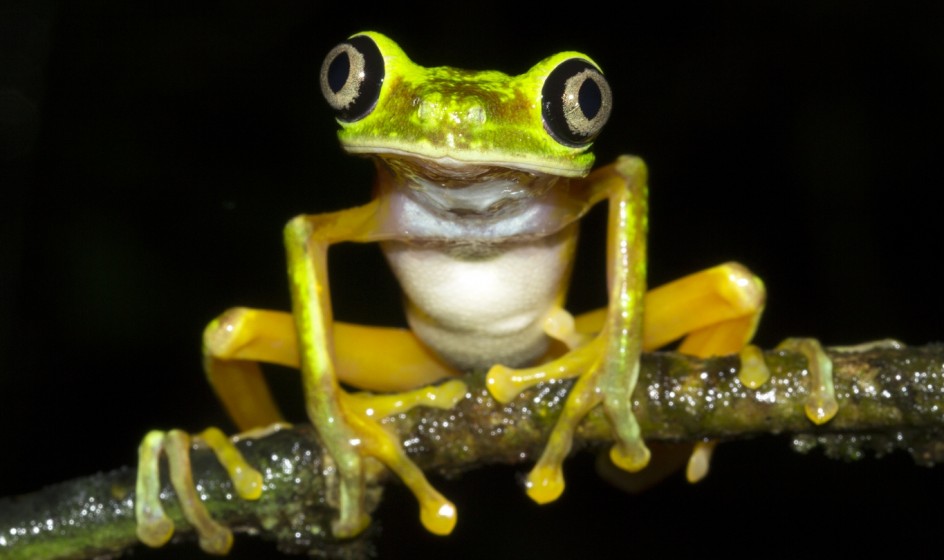

Lemur Leaf Frog

How can the skin’s immune response to the amphibian chytrid fungus help to equip threatened frog populations for future survival?
Chytridiomycosis is a skin disease globally threatening amphibian biodiversity and is caused by the amphibian chytrid fungus, Batrachochytrium dendrobatidis (Bd). Chytrid-driven declines have affected over 500 species worldwide. While some species have gone extinct, other populations are recovering after severe declines, such as the lemur leaf frog (Agalychnis lemur) in Central America. Bd now co-exists with the recovering populations, likely after a process of selection.
The study of host immune defences has gained a lot of attention in light of disease-driven amphibian declines. Skin is the first barrier against Bd infection and research on skin mucosome (skin peptides and bacteria) has provided insights into mechanisms of resistance/tolerance, which may improve conservation outcomes. Rebounding populations, such as the lemur leaf frog, offer a unique opportunity to characterize changes in skin mucosome following disease epizootics but also to assess how fit and equipped captive animals are to deal with a naturalized pathogen in the wild.
The team from the Zoological Society of London investigates changes in mucosome traits over the course of disease outbreaks, and how they shape the recovery of declining populations. This understanding will help to better understand skin mucosome as an immunological trait under selection and also may directly impact lrmur leaf frog management strategies. Given the limited knowledge on how captive conditions affect beneficial bacteria, potentially compromising reintroduction efforts, this tested approach may be broadly used in species risk assessments providing context for potential recovery actions.
Species:
Lemur leaf frog (Agalychnis lemur)
Implementing organisation:
Institute of Zoology, Zoological Society of London
Country:
Costa Rica
Funding period::
Jan 2022 - Dec 2022
Project goal
- To understand how amphibian skin mucosome (skin peptides and bacteria) changes relate to population declines and recovery following chytrid infection, in order to enhance captive management and improve conservation outcomes
Planned activities
- To sample wild individuals of lemur leaf frogs across its range, sample their bd infection status
- To sample museum preserved specimens
- To analyse the mucosome structure and diversity across space and time
- To investigate how long-term captive management impacts on skin mucosome
- Based on the results, to refine species action plan, reintroduction plans and captive management strategies survey
- To engage with and involve local communities and the ecotourism industry, by informing and involving local guides and field assistants